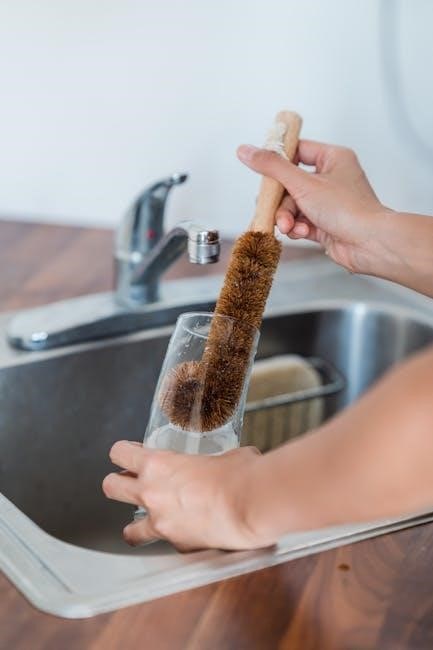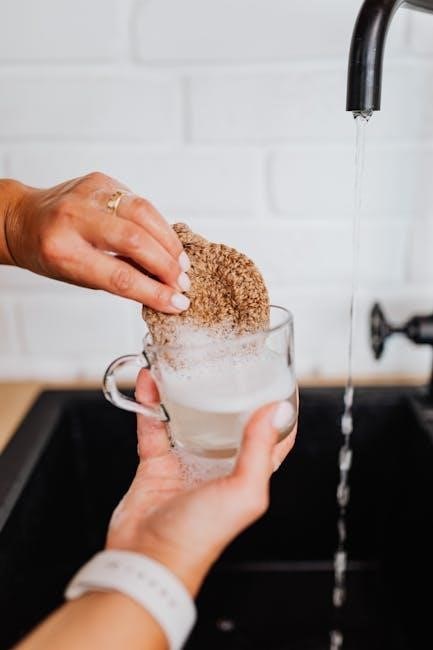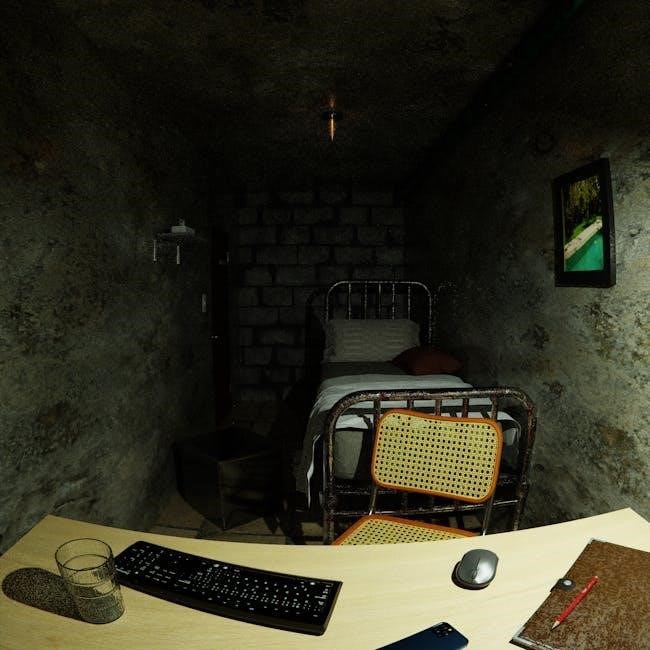Ortho glass splinting is a versatile and cost-effective method for stabilizing fractures and injuries, playing a crucial role in emergency and primary care settings. It provides effective immobilization, promoting proper healing and patient comfort, while being a practical skill for healthcare professionals.
What is Ortho Glass Splinting?
Ortho glass splinting is a method of immobilizing injuries using a specialized fiberglass material that combines strength, flexibility, and conformability. Unlike traditional plaster, ortho glass is lightweight, durable, and can be molded to fit various body parts. It is commonly used in emergency medicine and primary care settings to stabilize fractures, sprains, and other injuries. The material hardens when exposed to cold water, forming a rigid yet comfortable support. This technique is valued for its ease of application, cost-effectiveness, and ability to provide immobilization while allowing for swelling. It is a practical alternative to plaster splints, offering both functionality and patient comfort in acute care situations.
Benefits of Using Ortho Glass Splints
Ortho glass splints offer numerous advantages in injury immobilization. They are lightweight, durable, and conformable, providing excellent support while minimizing discomfort. Unlike plaster, ortho glass is easier to apply and dries faster, saving time in emergency situations. The material is cost-effective and versatile, suitable for various injuries, from fractures to sprains. It allows for swelling without compromising immobilization, reducing the risk of complications. Additionally, ortho glass splints are radio-translucent, making them ideal for patients requiring imaging post-application. Their ease of use and effectiveness make them a preferred choice for healthcare professionals in both emergency and primary care settings.
Common Applications in Emergency and Primary Care
Ortho glass splinting is widely used in emergency departments, operating rooms, and orthopedic clinics for immediate stabilization of fractures and injuries. It is particularly effective in immobilizing fractures, sprains, and soft tissue injuries, promoting proper healing and patient comfort. The method is valued for its versatility and cost-effectiveness, making it a preferred choice in both emergency and primary care settings. Its application ensures minimal discomfort while providing the necessary support for recovery, especially in urgent situations where quick immobilization is crucial.

Materials and Tools Needed
Essential items include ortho-glass rolls, cutting tools, gloves, measuring tape, and water for wetting the splint material. These tools ensure proper application and patient safety.
Essential Items for Ortho Glass Splinting
The essential items for ortho glass splinting include high-quality ortho-glass rolls, sharp cutting tools, protective gloves, measuring tape, and cold water for wetting the material. Additionally, a clean, flat work surface and a first aid kit are recommended for preparation and safety. These items ensure proper immobilization, prevent injury during application, and maintain hygiene standards. Proper preparation of materials is critical for effective splinting and patient comfort. Always verify the integrity of the ortho-glass rolls before use and ensure all tools are sterilized or sanitized. Having these items readily available streamlines the process, allowing for quick and efficient application in emergency situations. Proper organization of materials is key to achieving optimal results.
Preparing the Patient and Materials
Preparing the patient and materials is crucial for a successful ortho glass splinting procedure. Start by assessing the patient’s injury and ensuring the affected area is clean and free of debris. Remove any jewelry or clothing that may interfere with the splint application. Position the patient comfortably, ensuring proper alignment of the injured limb. Gather all necessary materials, including ortho-glass rolls, cutting tools, protective gloves, and cold water. Wet the ortho-glass in cold water for 30 seconds to activate the resin. Lay out a clean, flat work surface and have a first aid kit nearby. Ensure the patient is informed and relaxed to facilitate a smooth process. Proper preparation ensures both safety and efficiency during the application.

Step-by-Step Guide to Applying an Ortho Glass Splint
Applying an ortho glass splint involves measuring, cutting, and shaping the material, followed by wrapping and securing it to immobilize the injury effectively.
Measuring and Cutting the Splint
Measuring and cutting the ortho glass splint accurately ensures proper fit and immobilization. Begin by assessing the injured limb, extending measurements slightly beyond the injury site for optimal support. Use a flexible measuring tape or the splint material itself to determine the correct length and width. Cut the ortho glass using sharp scissors or a utility knife, ensuring smooth edges to avoid skin irritation. It’s crucial to handle the material carefully to prevent cracking. Always use cold water to wet the splint before cutting, as this makes it more pliable and easier to shape. Proper measurement and cutting are foundational for a successful application.
Wetting and Shaping the Ortho Glass
Wetting the ortho glass with cold water is essential to enhance pliability. Submerge the material briefly until it becomes manageable but not overly soft. Gently shape the splint around the injured limb, contouring it for optimal support and immobilization. Use the palms of your hands to mold the glass, avoiding fingertips to prevent pressure points. Ensure the splint aligns correctly with the body part, providing even support. Once applied, the material hardens, forming a durable and supportive structure. Proper wetting and shaping are critical for effective immobilization and patient comfort.
Wrapping and Securing the Splint
After shaping the ortho glass, wrap it securely using a soft padding material, such as gauze or stockinette, to cushion the splint and protect the skin. Begin wrapping from the distal end, moving proximally to ensure proper alignment and immobilization. Use medical tape to fasten the splint firmly in place, avoiding excessive tightness that could compromise circulation. Ensure the edges are smooth to prevent pressure points or irritation. Double-check the fit by gently pressing on the splint to confirm it does not shift. Proper wrapping and securing are vital for maintaining immobilization and ensuring patient comfort during the healing process.

Common Mistakes to Avoid
Common mistakes include incorrect measurements, improper wrapping techniques, and failure to check distal pulses post-application, which can lead to discomfort or compromised circulation. Avoid these errors for optimal results.
Incorrect Measurement and Cutting
Incorrect measurement and cutting are critical errors in ortho glass splinting. Improper sizing can lead to a poorly fitting splint, causing discomfort or improper immobilization. Always measure the affected limb carefully, ensuring the splint extends beyond the injury site for adequate support. Cutting the material too short or without proper alignment can result in ineffective stabilization. Additionally, failure to account for swelling or joint movement may lead to a splint that restricts circulation or fails to immobilize the injury. To avoid these issues, use a splinting guide and double-check measurements before cutting. Proper technique ensures a well-fitted splint, promoting healing and patient comfort.
Improper Shaping and Wrapping Techniques
Improper shaping and wrapping are common mistakes in ortho glass splinting. If the material is not molded correctly to the contours of the limb, it may fail to provide adequate support or cause pressure points. Wrapping too tightly or unevenly can restrict blood flow, potentially leading to complications like compartment syndrome. Conversely, a loose wrap may not immobilize the injury effectively. Use the palms of your hands to shape the ortho glass, as fingertips can create indentations that lead to pressure points. Ensure the splint is wrapped smoothly, starting from the distal end and moving proximally, and always check for distal pulses post-application to confirm proper circulation.

Tips for Effective Ortho Glass Splinting
Use cold water for wetting ortho-glass to ensure proper molding. Always wrap from the distal end to the body for optimal support. After applying, check for distal pulses to ensure proper circulation and avoid pressure points. Utilize the palms of your hands to shape the material, preventing indentations caused by fingertips. Smooth, even wrapping is essential for both immobilization and patient comfort. These techniques enhance the effectiveness of ortho glass splinting in emergency and primary care settings.
Using the Palms Instead of Fingertips
Using the palms of your hands instead of your fingertips when shaping ortho-glass splints reduces the risk of creating pressure points. This technique ensures even distribution of pressure and a smoother fit. By applying gentle, consistent force with your palms, you can mold the material more effectively to the contours of the patient’s extremity. Fingertips can inadvertently create indentations, which may cause discomfort or impair circulation. Palms provide a broader surface area, allowing for better control and a more uniform application. This method enhances patient comfort and improves the overall effectiveness of the splint. Proper training and practice are essential to master this technique, ensuring optimal immobilization and care.
Checking for Distal Pulse Post-Application
Checking for a distal pulse after applying an ortho-glass splint is crucial to ensure proper blood flow to the affected limb. Improper wrapping or excessive tightness can impede circulation, potentially leading to complications like compartment syndrome. To check, gently palpate the pulse at the distal end of the injured limb, such as the wrist or ankle. Compare the strength and rhythm with the unaffected side. If the pulse is absent or significantly diminished, it may indicate over-tightening, requiring immediate adjustment of the splint. This step ensures patient safety and maintains tissue viability, preventing long-term damage. Regular monitoring post-application is essential for optimal patient outcomes.
Ortho glass splinting remains a vital technique in emergency and primary care, offering a balance of versatility and effectiveness for immobilizing injuries. Proper training and adherence to established protocols are essential to ensure both patient safety and optimal outcomes. Healthcare providers must stay informed about best practices and continuously refine their skills to master this technique. By doing so, they contribute significantly to improving patient care and recovery processes. The careful application of ortho glass splints not only aids in healing but also enhances patient comfort, making it an indispensable tool in medical settings.